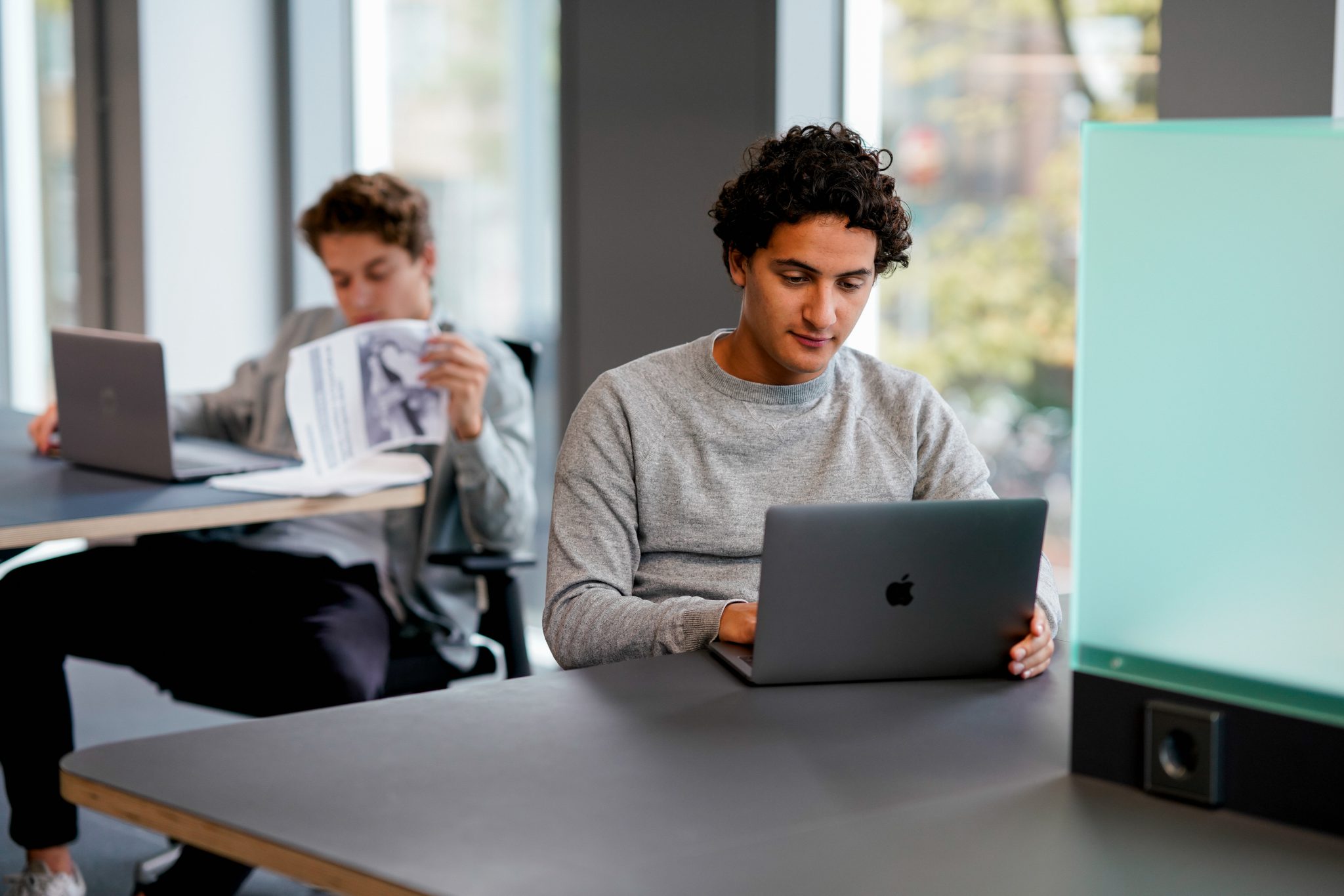Menu

Tips & Tricks Hybrid Education
On this page, you find regularly updated tips and tricks, categorised per subject, for hybrid education. These tips and tricks were gathered from the first experiences of colleagues and support staff.
Last update: September, 28
Sharing the PowerPoint slides
- Use Zoom to share the PowerPoint slides in. This ensures that when the lecturer moves on to the next slide, this is synchronised with the Zoom session for the students at home.
- For the hybrid tutorial, two computers/laptops may be needed, as there is a separate screen present. The laptop of the TA can be used to connect to the camera and microphone of the separate screen to Zoom. The desktop or laptop of the teacher can be used to share the PowerPoint in Zoom, so that it will appear in Zoom for the students online and projected on the screen for the student on-site.
Technical set-up
- Attempt to enter the lecture or tutorial room 15 minutes before the start of the lecture to ensure you have enough time to set up all the technical equipment and the Zoom session. In the same way, try to close the lecture 15 minutes before time, so that the next lecturer can also start setting up in time.
- Make sure to use the Eduroam Wi-Fi to log in to the Zoom with. In case there is a guest lecturer, communicate to them in advance to bring their slides on a USB stick since they might not be able to connect with the Eduroam Wi-Fi when using their own laptop.
- If you make use of a Macbook, make sure you have an adapter that allows you to connect your laptop to a HDMI and USB cable. The HDMI cable is needed to connect the laptop to the lecture hall screen, and the USB cable is needed to connect the laptop to the BRIO camera and microphone. Alternatively, you can make use of the desktop in the room. The lecturer would then have to put their slides on a USB stick.
- Sometimes when the lecturer uses presenter mode in PowerPoint, part of the presentation may be cut off in Zoom. Check (or ask a student to check) if the PowerPoint is fully visible both in the lecture room and in Zoom.
- Check the Zoom settings related to background noise if the sound from the BRIO is not high quality.
- Using a separate microphone in addition to the BRIO may decrease the audio quality.
In case there are any technical issues that a teaching assistant present cannot fix, contact AV: (020-525) 1403
Audience interaction & sound
- When there is a break, mute the Zoom session. Otherwise, students at home will hear all the noise that comes from the lecture hall.
- Before starting the lecture, check with the students on Zoom whether they can hear the lecturer. Also, check with the students online whether they can be heard in the lecture hall when they speak. Then students online can directly ask questions if they want to.
- Students at home are advised to change their zoom setting to speaker view and adjust the size of the slides and the speaker with the ‘side-by-side mode’ found under the ‘view options’ at the top of the screen.
- When interacting with the audience in the room, the students watching from home can often not hear what is being said. Tip: the lecturer can repeat the question, or a teaching assistant can type out what is being said in the chat.
- In A0.09 there is a small wooden stage where the desk is placed on. For people online, it is disturbing when someone walks on it, so try to limit this.
Whiteboard
- When writing on the whiteboard in the room, this can this can sometimes be difficult to see for students watching from home. Make sure to write with a black marker to ensure the best visibility.
- When teaching hybrid, and especially when using the whiteboard, make sure that ‘Mirror my video’ under video settings is not selected. Otherwise, students at home won’t be able to read what is on the whiteboard since it’s mirrored.
- In case the writings are still not very visible, a teaching assistant could also adjust the BRIO to get closer to the whiteboard, use their phone or laptop to film the whiteboard or, if possible, type in the chat what is being written on the whiteboard.
- Tip: the lecturer can also make use of a whiteboard via an iPad. For example, some lecturers at UvA make use of Explain Everything in combination with an Apple Pencil. One lecturer made use of GoodNotes to share his slides and left some empty slides to write in.
- These tips are also useful when the BRIO in the room cannot show both the lecturer and the whiteboard.





